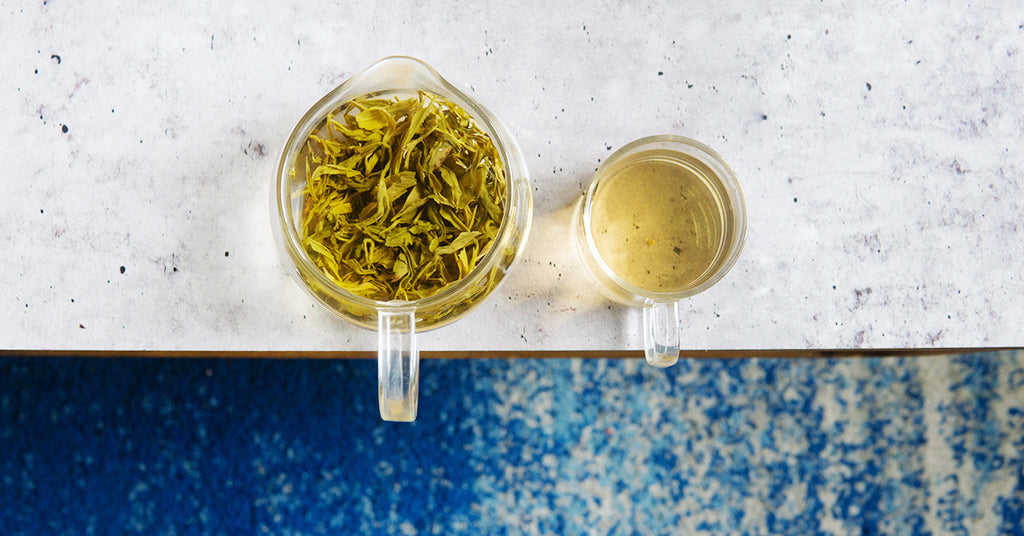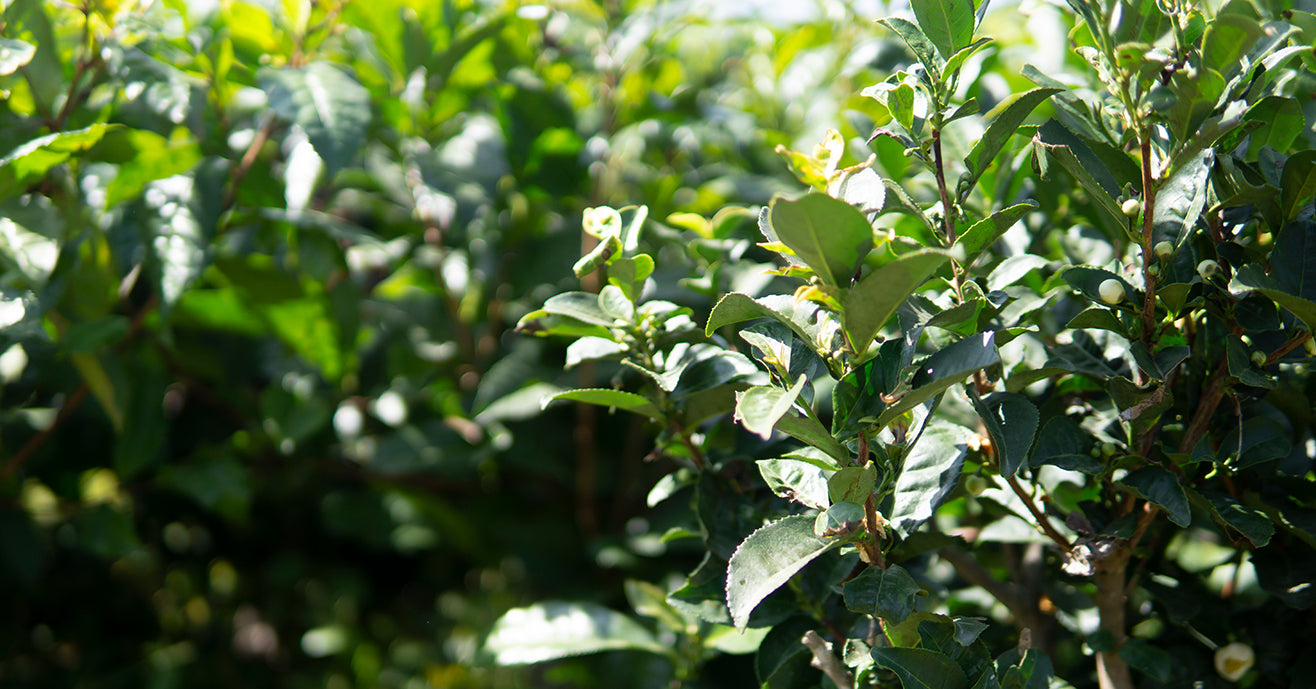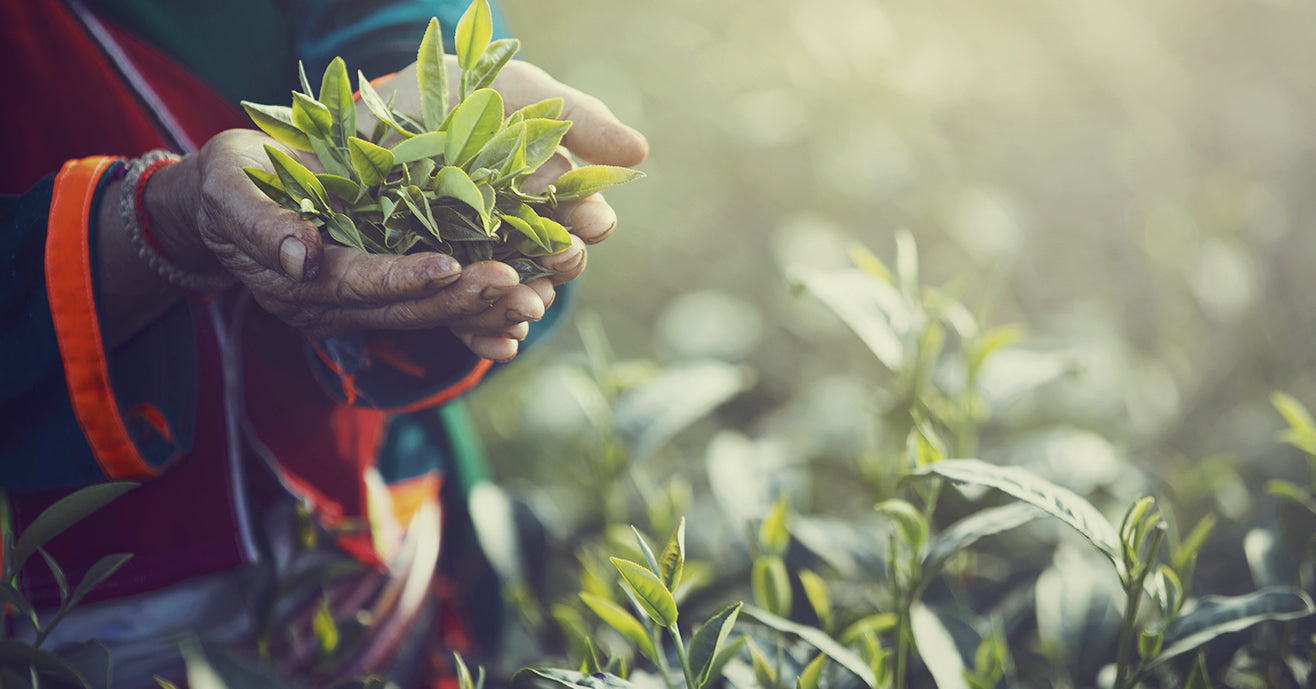How Green Tea Is Made

“What green tea is best?” you might ask. Well, that’s a tough one because there are more than 1,500 styles of green tea made around the world! From heavenly scented jasmine pearls, to naturally floral Organic Darjeeling Green, and oceanic matcha, to vegetal Nepali Green Pearl, the options are endless.
The reason for this breathtaking variety is because each country, region, and even village has its own way of making green tea. China is widely accepted as the birthplace of green tea, and today it remains the dominant supplier worldwide (estimates are about 80% of global supply). Japan reveres green tea (matcha, anyone?), incorporating it into everything from ice cream to sacred ceremony. Today, as India and Nepal begin to experiment with their own green teas, we have more options than ever before. Wherever and however green tea is made, one thing is for sure: it’s an exciting time to be a green tea drinker.
Where Does Green Tea Come From?
As with all teas, there are three steps to the production of green tea: growing the plant, harvesting the leaf, and processing the harvest into a finished tea. The tea maker has to exercise precision, patience, and flexibility to make things just right.
There’s an adage in tea that quality is made in the field and lost in the factory (where it's processed). This is especially true with greens. Camellia sinensis, the plant from which all tea is made (green, black, white, matcha, puerh, and others), has two primary varieties: the China Jat indigenous to (wait for it) China, and the Assam Jat, native to India’s Assam region. Green tea is typically, though not always, made with the China Jat whose smaller leaves yield more nuanced flavors than the larger, bolder leaves of the Assam Jat. Underneath the broad umbrella of the China Jat, there are countless cultivars that have been honed over millennia to yield specific flavors unique to the soils and weather conditions from which they hail.
Growing Green Tea
Generally there are two categories of growing conditions for green teas: sunny and shady. Shade-grown teas are generally associated with having more umami and higher amounts of L-Theanine, an amino acid correlated with feeling calm and relaxed. The Japanese are the masters of shade-grown greens and even move portable structures around their tea gardens to create shade-on-demand in the days or weeks leading to the harvest. In most of the world, however, the tea bush is grown in the sun or naturally semi-shaded places, including in India and Nepal.
Harvesting Green Tea
The leaves that are harvested to make green tea are usually the terminal bud of the tea bush and the first one or two leaves below it. In India and Nepal, the best green teas are made with leaves harvested in the spring or early summer, before the plant has switched to the explosive growth of the late summer or the pre-hibernation maintenance of autumn. Some producers will crank out green tea during the monsoon season, but these teas typically lack character. That’s because during the strong rains, the plant grows so quickly that the leaf’s flavor compounds are less concentrated, and because the blanket of clouds that cloaks the processing facilities makes processing quite challenging.
That’s why the green teas we source are made during the spring and early summer. As the tea bush awakes from winter dormancy and sends out its first shoots of the year, tea farmers watch the new growth carefully and then use an expert hand to pluck select shoots. These shoots need to be very carefully handled to avoid bruising the fragile young leaves. Soft and flexible bamboo baskets are used for carrying the delicate leaf indoors where it will be processed.
Processing Green Tea
All processing happens within 24 hours of harvest, so the tea maker must move quickly. Depending on the style and region, sometimes the first step is to give the harvest a short, soft wither to allow the leaf to become more pliable and easy to shape. In India and Nepal, it’s more common to skip the wither and move straight to the next step, which is the defining one for green teas: heat treatment.
1-Heat Stops A Green Tea From Becoming A Black Tea
The application of heat to the fragile, unrolled and unoxidized leaf is crucial to making green tea. With black and oolong teas, the leaf is first rolled to break open the cell walls before any heat is applied, triggering an oxidation reaction that makes the leaf black. With green teas, hitting the leaf with heat turns off the enzyme that catalyzes the oxidation reaction, preserving the chlorophyll that gives green tea its name.
The type of heat used—dry versus hot—effectively divides the world of green teas in two. Dry heat leads to more floral, nutty, and sweet greens, while wet heat results in a briny, oceanic, vegetal tea with astringent depth and body.
Dry heat is the more common method globally, and it involves a hotter heat. Sometimes called roasting or pan-firing, the style was developed by Chinese tea makers and traditionally done in a wok, with someone continually stirring the leaf by hand or with a bamboo paddle to avoid burning. Today, a more common and efficient (though less picturesque) way of replicating the wok is to use a long rotating metal cylinder mounted horizontally, with the axis running parallel to the ground. Leaf is loaded into one end of the revolving heated chamber, which spins and slowly ushers the leaf to the exit at the far end. When the leaf is at the bottom of the cycle, it comes into direct contact with hot metal grates. Then, it eventually tumbles down to the bottom, cooling as it falls through the air to prevent burning. All of the green teas we source, including our popular Darjeeling Green, are created with a dry heat.
The other method of applying heat is to use a wet heat, typically through steam close to 100° C. This style of heat is a comparatively low temperature, which fires up a briny, oceanic, vegetal tea that has astringent depth and body. The Japanese perfected this method, and the steam is applied for a quick blast, no more than a few minutes.
2-Rolling The Leaf
After the initial heat, green teas are often rolled to break open the cells and coat the exterior of the leaf with the essential oils that give green tea its strength and vegetal flavor. In India and Nepal, this is often done with small versions of the same rolling tables that are used to make black teas, which allows for more precise and gentle rolling.
3-Shaping The Leaf
If the tea maker wants to further layer the tea with flavor and create an attractive visual, the next step in the process is shaping. There are a variety of tools that can result in different shapes, from flattening the leaf to make teas like the Nilgiri Green Dragon, or using heated pans to toss the rolled leaf as with the Nepali Green Pearl. In the case of pearl-shaped teas, the leaves first shrink and curl when in contact with the hot metal, and then they briefly expand when exposed to the cool air. After two to three hours of being tossed into the air, the tea emerges as tightly balls packed with flavors ready to explode into the cup.
4-Drying Green Tea
To finish the tea and prevent any further chemical changes from happening, the tea is run through a dryer. Comparing green tea vs. black tea, the drying is often more noticeable in greens because the unoxidized leaf acts as a sponge for any flavors that result from drying. This is where a roasted flavor enters the picture. These toasty notes can be desirable if well balanced, but they can also easily become overdone. In comparison, black tea’s flavor is less impacted (though still affected) by the drying step.
5-Sorting Green Tea
The last step in making green tea is to separate the finished tea by size. High-end green teas like the Nepali Green Peak need very little sorting because there is only one size made: the whole leaf! Elsewhere, green tea comes out of the dryer with a range of leaf particle sizes, often the result of a heavy roll to break open the more tough leaf in order to extract more flavor. This is the type of tea that ends up in tea bags.
What Is Matcha Made Of?
There are a number of other ways to make green tea. For example, one approach is to use only the stems of the harvest, which is achieved by pulling the leaf off the stems. These are called twig teas, and by avoiding any leaf, the tea has reduced caffeine content and a comforting woody character.
And then there’s matcha, an entirely different universe of green tea. While matcha is made of the same plant as the rest of green teas, the Japanese have developed a highly sophisticated set of steps for making this revered tea type that involves pulverizing the tea leaf through a grinding process. When one drinks matcha, the entire leaf is consumed. With all other types of tea, the leaf is steeped and then removed. As a result, matcha often carries significantly more caffeine because the drinker metabolizes the actual leaf.
Which Green Tea Is Best To Start With?
We answer which green tea is best with, “It depends!” If you like floral, sweet, and difficult-to-oversteep, try our Organic Darjeeling Green. If you want to explore notes of smoked artichoke and Meyer lemon, give the Organic Nepali Green Pearl a try, and be sure to re-steep this one because each infusion brings its own flavors. And finally, if you’re like us and don’t want to choose, we put together a Green Tea Bundle to give you a bit of everything.
Happy steeping!
Want To Learn More About The Tea Making Process?
READ ABOUT HOW BLACK TEAS ARE MADE
You may also enjoy:
Blog Author:

Raj Vable, Founder
He has been confounded by the leaf since his first transcendental encounter with white tea in 2010. Three years later, he started Young Mountain Tea to bridge his budding tea obsession with his interest in traveling in the mountains and previous experience creating job opportunities in rural India. He revels in working across cultures and can be regularly found trying to get the rest of the team on board with another outlandish tea project. His favorite teas remain white, and he’s always searching for the next cup of magic.











Leave a comment